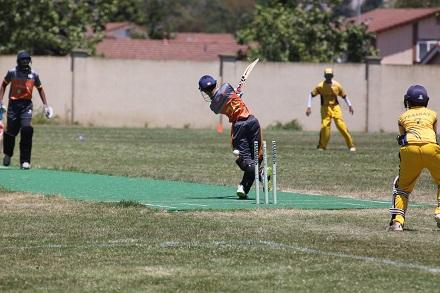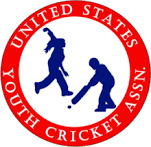
The United States Youth Cricket Association (USYCA) is dedicated to popularizing the sport of cricket in the U.S. by promoting its adoption in schools, summer camps and youth organizations, while at the same time, promoting physical activity. USYCA has been a leader in grassroots cricket development since 2010, having placed more than 2,500 cricket sets in schools, supported various youth programs via their build-a-pitch program and inspired many youth programs across United States.
Sports Destination Management: What is the participation trend for cricket is the U.S.?
Ranjeet Singh: It’s going upward. There are many players getting in and out every year, but overall, we can say that there is at least 10 percent increase in overall youth and women participation over last five years.

Singh: The International Cricket Council (ICC) has been personally managing the cricket affairs of the USA since 2015, having expelled the previous governing body (USACA, the USA Cricket Association) and installed a new governing body (USA Cricket) which is completely operating under its control and supervision.
SDM: What kind of efforts are underway to make the sport more visible?
Singh: There is a strong effort to add cricket in the 2028 Olympics which will be held in L.A. ICC has already put in about $20 million over last five years, and the National Men and Women's Cricket Team have greatly benefited from these efforts. We have had some international matches held on U.S. soil since ICC has taken over the management, and with the funding and portfolio they have, USA Cricket is in good hands.
SDM: Getting back to USYCA, what kind of events does the group put on?
 Singh: We have two big championships held every year around the weekend near July 4th. National Youth Cricket League (NYCL) is the largest youth cricket championship in United States, and has been since 2014. NYCL is the first league to start a tournament with a full ladder from age group of Under 10 to Under 18. It is also the first league to allow co-ed participation since the beginning. In 2018 it also kicked off the first National Junior All Girls Tournament. Its growth can be simply measured by its increasing participation and overwhelming community support. The growth is as follows:
Singh: We have two big championships held every year around the weekend near July 4th. National Youth Cricket League (NYCL) is the largest youth cricket championship in United States, and has been since 2014. NYCL is the first league to start a tournament with a full ladder from age group of Under 10 to Under 18. It is also the first league to allow co-ed participation since the beginning. In 2018 it also kicked off the first National Junior All Girls Tournament. Its growth can be simply measured by its increasing participation and overwhelming community support. The growth is as follows:
- 2014: Dallas, TX (18 Teams)
- 2015: St. Louis, MO and Raleigh, NC (32 Teams)
- 2016: Houston, TX & Minneapolis, MN (40 Teams)
- 2017: New England, CT & New Jersey, NJ (46 Teams)
- 2018: San Jose, California (55 Teams)
- 2019: Morrisville, NC (65 Teams)
- Our 2020 event will be held in Maryland and our 2021 event will be in Seattle, Washington.
We also host an annual women's championship called NWCL (National Women's Cricket League). It’s a three-day event and with six 20/20 games for each participating team. We had four teams in our inaugural 2019 event. Next year, we are hoping to get six teams.
 SDM: How does USYCA choose locations for its events?
SDM: How does USYCA choose locations for its events?
Singh: There are minimum requirements in terms of infrastructure and resources needed to host the event. As long as those are met, anyone can bid to host NYCL or NWCL. It is first-come, first-serve. We do a formal contract as part of the hosting agreement.
SDM: What facilities are needed?
Singh: For a top-quality event, we need a natural turf pitch – which is quite expensive. There are only three cricket pitches in entire USA that are approved to host international matches and that meet the necessary standards. For our youth event, we request the host to have a minimum of six cricket grounds (artificial turf is fine) that meets the size requirement as per the age level. In general, the natural turf wickets are very expensive to maintain, and are not affordable for most of the recreational leagues.
SDM: How can interested candidate submit a bid?
Singh: They usually contact us via e-mail, and we initiate the conversation. if there any exception to be recorded on the agreement document, it is done before signing. The contract also covers the responsibilities of the host and USYCA, and how both together can pull off a successful event.
T he process has evolved over last few years and now it is quite streamlined. The participation numbers in NYCL has grown by at least 25 percent year over year, and that should reflect that the organization has done things right.
he process has evolved over last few years and now it is quite streamlined. The participation numbers in NYCL has grown by at least 25 percent year over year, and that should reflect that the organization has done things right.
SDM: What is the makeup of the sport of cricket, in terms of percentage of men, women and youth?
Singh: The approximate proportion of people playing cricket would be 90 percent male (age 25-65), 7 percent male (ages 19-24), 2.5 percent youth male (under 18) and .5 percent female.
SDM: One of USYCA’s most important goals has been getting cricket equipment into the hands of children.
Singh: Yes, USYCA, during its initial six years (2012 -2015), had been primarily focused on spreading cricket in school, and it has distributed more than 2500 cricket sets, did hundreds of demos to P.E. teachers and community groups.
SDM: Is the sport picking up popularity?
 Singh: Maryland is the only region that has tasted success with school cricket, if any. Other places we have been too, they have liked cricket, kids loved it but it could not appeal enough to get added to the curriculum or set up a formal youth cricket program.
Singh: Maryland is the only region that has tasted success with school cricket, if any. Other places we have been too, they have liked cricket, kids loved it but it could not appeal enough to get added to the curriculum or set up a formal youth cricket program.
USYCA also lacked support from the national governing body. The previous governing body (USACA) started a parallel program called 'Cricket Lets Play USA'. The new governing body, USA Cricket, launched 'Rookie League', which is exact replica of what USYCA does. These parallel programs dilute the impact as if I am a schoolteacher, apart from challenge in understanding the sport, the bigger challenge is understanding the governance structure and pathway.
SDM: Are you still working to put cricket equipment into children’s hands?
Singh: USYCA continues to support any school that wants to adopt cricket. But with NYCL coming under USYCA in 2017, it has taken most of the focus. 95 percent of youth cricket in the entire country is run by parents and volunteers. NYCL is the largest youth cricket in USA in terms of participation since 2014. All our executives are volunteers and there is no compensation or reimbursement or financial support.
SDM: How strong is the sport, nationwide?
 Singh: Cricket is very fragmented in the country right now. We are in desperate need of leaders who can inspire and unite the community. Unless everyone starts rowing the boat in the same direction, it is not going to go anywhere. The issue is right now, we are not even in the same boat:
Singh: Cricket is very fragmented in the country right now. We are in desperate need of leaders who can inspire and unite the community. Unless everyone starts rowing the boat in the same direction, it is not going to go anywhere. The issue is right now, we are not even in the same boat:
There is ICC's USA Cricket as NGB. There is USACA, expelled but still alive and claiming to be the NGB. There is the ACF (American Cricket Federation) which was an NGB formed in 2012 to compete and drag down USACA. There is CCUSA (Cricket Council USA) which has its own national events and governance model. And then there are various regional and state governing bodies who run and manage their own show, and they don’t give too much attention to any of the above national ones. They are very connected with local players and are very influential in their respective states and regions.
On top of all that, there are multiple formats of cricket ranging from six-overs, played with tennis ball and taking about 45 minutes, to 50-overs, which uses a leather ball and can take nine hours to play a game. There is lots of diversity and we desperately need a good leader who can bring everyone on a common ground and create value for the membership and participation and connect with them.
SDM: The demographic is often individuals who were not born in the U.S.
Singh: Most of the cricketers are immigrants who played the sport abroad, and who came here for education, work or family. If cricket has to grow, we need to connect to the immigrant population and motivate them to extend the sport to at least five new Americans in their community and friends. In short, the sport is growing and with all the push and focus from ICC and rest of the world, USA Cricket may reach new heights in near future.

 usyca.org
usyca.org